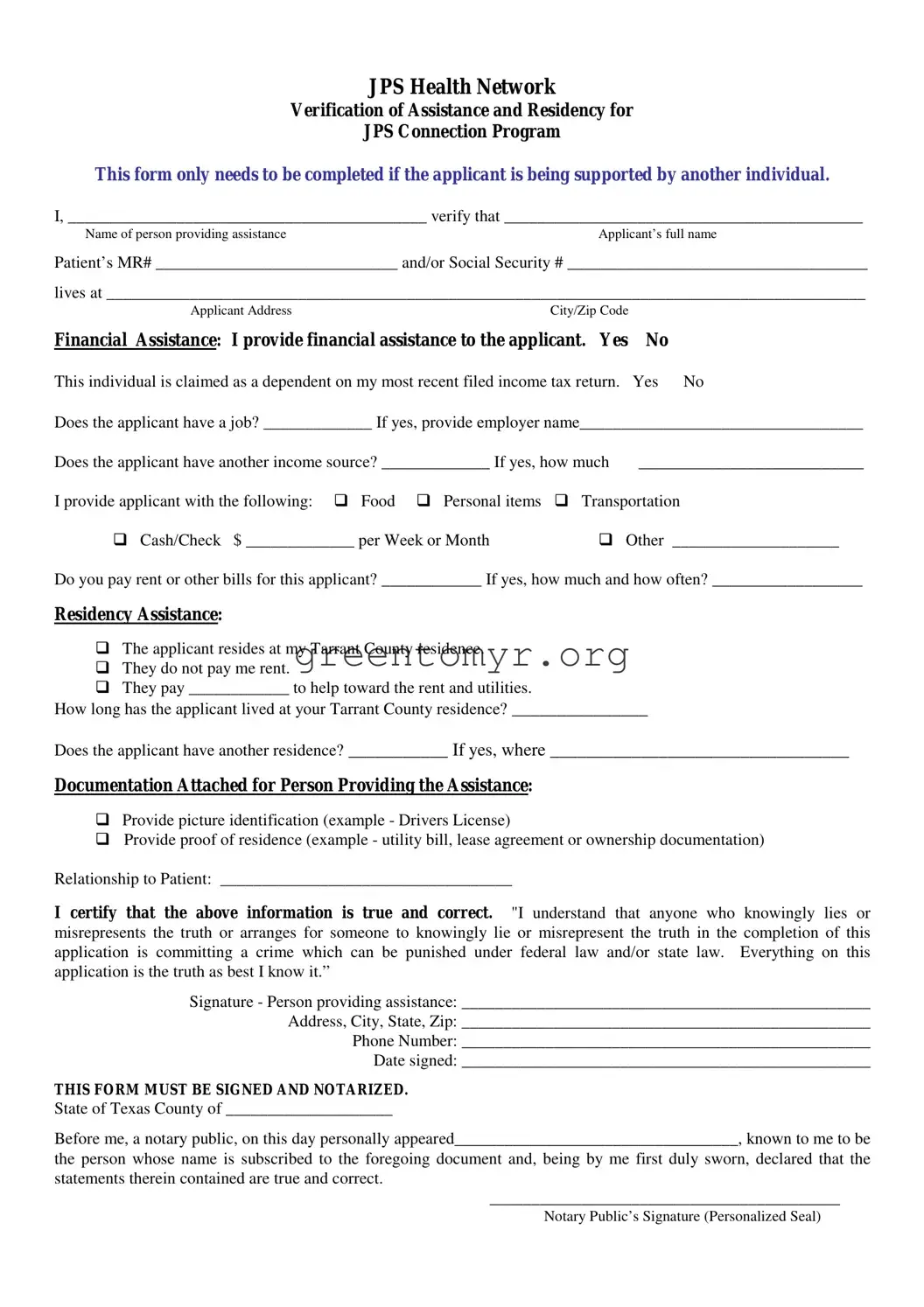JPS Health Network
Verification of Assistance and Residency for
JPS Connection Program
This form only needs to be completed if the applicant is being supported by another individual.
I, ___________________________________________ verify that ___________________________________________
Name of person providing assistanceApplicant’s full name
Patient’s MR# _____________________________ and/or Social Security # ____________________________________
lives at ___________________________________________________________________________________________
Applicant Address |
City/Zip Code |
|
Financial Assistance: I provide financial assistance to the applicant. Yes |
No |
This individual is claimed as a dependent on my most recent filed income tax return. |
Yes No |
Does the applicant have a job? _____________ If yes, provide employer name__________________________________
|
|
|
Does the applicant have another income source? _____________ If yes, how much |
___________________________ |
I provide applicant with the following: Food Personal items |
Transportation |
Cash/Check $ _____________ per Week or Month |
Other ____________________ |
Do you pay rent or other bills for this applicant? ____________ If yes, how much and how often? __________________
Residency Assistance:
The applicant resides at my Tarrant County residence.
They do not pay me rent.
They pay ____________ to help toward the rent and utilities.
How long has the applicant lived at your Tarrant County residence? _______________
Does the applicant have another residence? ___________ If yes, where _________________________________
Documentation Attached for Person Providing the Assistance:
Provide picture identification (example - Drivers License)
Provide proof of residence (example - utility bill, lease agreement or ownership documentation)
Relationship to Patient: ___________________________________
I certify that the above information is true and correct. "I understand that anyone who knowingly lies or misrepresents the truth or arranges for someone to knowingly lie or misrepresent the truth in the completion of this application is committing a crime which can be punished under federal law and/or state law. Everything on this application is the truth as best I know it.”
Signature - Person providing assistance: _________________________________________________
Address, City, State, Zip: _________________________________________________
Phone Number: _________________________________________________
Date signed: _________________________________________________
THIS FORM MUST BE SIGNED AND NOTARIZED.
State of Texas County of ____________________
Before me, a notary public, on this day personally appeared__________________________________, known to me to be
the person whose name is subscribed to the foregoing document and, being by me first duly sworn, declared that the statements therein contained are true and correct.
__________________________________________
